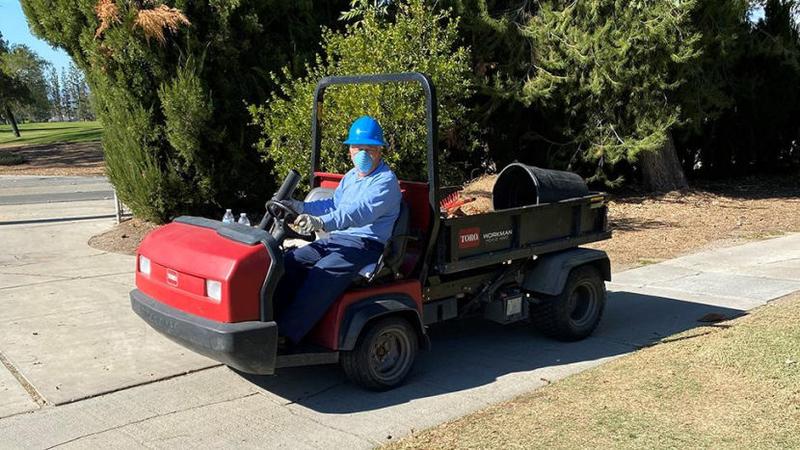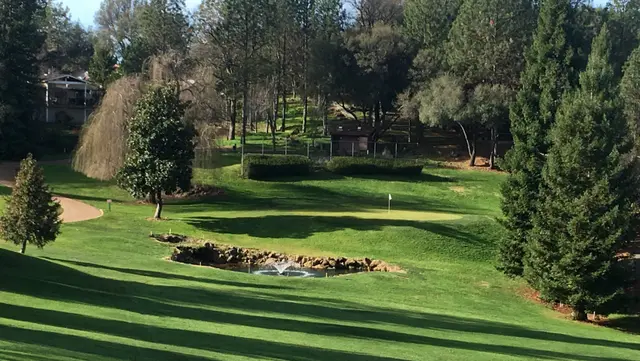
Optimizing Your Investment in Golf Course Maintenance Equipment
How to make the most of your golf course equipment investments
Golf course maintenance equipment is expensive and for good reason. The type of equipment needed to maintain quality playing conditions is very specialized and few manufacturers make it. A typical golf course maintenance inventory can run as much as $1 million, making it one of the bigger, if not the biggest, line item in your budget.
With the economic downturn not very far back in the rear view mirror, many club budgets have been reduced, which has led to delays in equipment replacement. It's understandable, but not necessarily smart. Using maintenance equipment beyond its useful life results in inefficiencies, from lower reliability rates to higher repair costs, reduced effectiveness, and often, higher labor costs.

Yes, having a qualified mechanic is a vital asset to your club and makes a big difference. At the same time, even the best of mechanics can’t make equipment last forever. As your inventory ages, there is a balancing act between deciding how long to continue the upkeep and not having the right equipment in good working condition, as this can be more expensive than a replacement.
Newer equipment affords greater efficiency, less fuel consumption, and can lead to better playing conditions, which in turn lead to higher revenues. But how do you know what new equipment will make the most difference in your bottom line and course conditions?
Through years of experience at BrightView, we have learned first-hand how being strategic with forecasts and plans can help optimize your investment in maintenance equipment. Considering the significant investment you have in your inventory combined with costs for replacements, we have found that being more prepared can make a tremendous difference.
Keep Accurate and Updated Records of Your Inventory
We cannot stress enough how important it is to always keep detailed, accurate, and updated records for your maintenance equipment. This will pay dividends in allowing you to get the most you can out of each piece, as well a better understanding of when it is best to replace it.
To manage your inventory effectively, it takes much more than keeping a spreadsheet with a list of your equipment. Yes, it is important to keep track of basic information, such as the brand, model, year, year purchased, cost, remaining payments (if leased), etc. However, it is even more important to track dynamic information as well. In particular, for each piece, you should be tracking:
• Projected life expectancy in terms of the total number of hours
• Current utilization hours
• Total years of service at your course
• All preventive maintenance and major repair services, along with costs and parts required
• Estimated annual usage in hours remaining (i.e. projecting when to replace)
• Estimated replacement cost (increase annually 1.5 to 2 percent)
There needs to be an active commitment to maintaining these records on an ongoing basis. Collectively, this information can provide a wealth of quantifiable information to help you understand life expectancy and costs to maintain your inventory and prioritize plans for replacement.
Create a 5- to 10-Year Replacement Plan
The old saying “failing to plan is planning to fail” can truly apply with your equipment inventory. Considering replacement pieces can cost in excess $75,000, it will do your business a world of good if you start planning now for equipment purchases you may not need for several years.
By using your inventory records, you can prioritize an annual plan for replacing equipment over a time period that best meets your needs and financial capabilities. Map out which pieces you plan to replace each year for the next five to 10 years.
It also makes sense to be consistent in budgeting an annual investment into equipment. Even if you come to a year with no plans for replacement purchases, it is prudent to bank this annual amount and add it to the next year, enabling you to make more substantial purchases. For example, if you plan to invest $75,000 a year for the next 10 years, your strategy could focus on how best to allocate $750,000 for this vital inventory vs. just the annual budget.
Using this approach will better enable you to make the major purchases, plus help ensure you will continue to have a sufficient inventory of maintenance equipment in good working order.
Other Helpful Considerations
Obviously, there can be a lot of flexibility with these plans, especially considering no two courses are the same. Here are a few additional helpful considerations:
• When projecting life expectancy of equipment, the topography of your course will likely have an impact (i.e. if your course is undulating, you should expect fewer hours of operations, while a flat course may extend the life expectancy).
• If a piece has a costly repair, determine how long life expectancy will be increased. Typically, if it extends the life at least 20 percent, then repair it; otherwise, replace. Plus, if the repair cost is more than 20 percent of a new piece, consider replacing.
• Try to keep mowing units from the same manufacturer. Some parts can be interchangeable, plus the systems will likely be similar, making it easier for the equipment technician to learn troubleshooting techniques and have a better understanding of them.
• Cultural equipment, such as aerifiers, tractors, topdressers, etc., do not need replacement as often as mowing equipment that is used daily.
• Determine best fuel source for the future - gasoline, diesel, or electricity - when creating your replacement plan.
Would you like to learn more on how BrightView and our team of experts can help your course manage your equipment and maintenance cost? Contact us today and we'd be happy to discuss how we can help you get the most out of your equipment plan.



